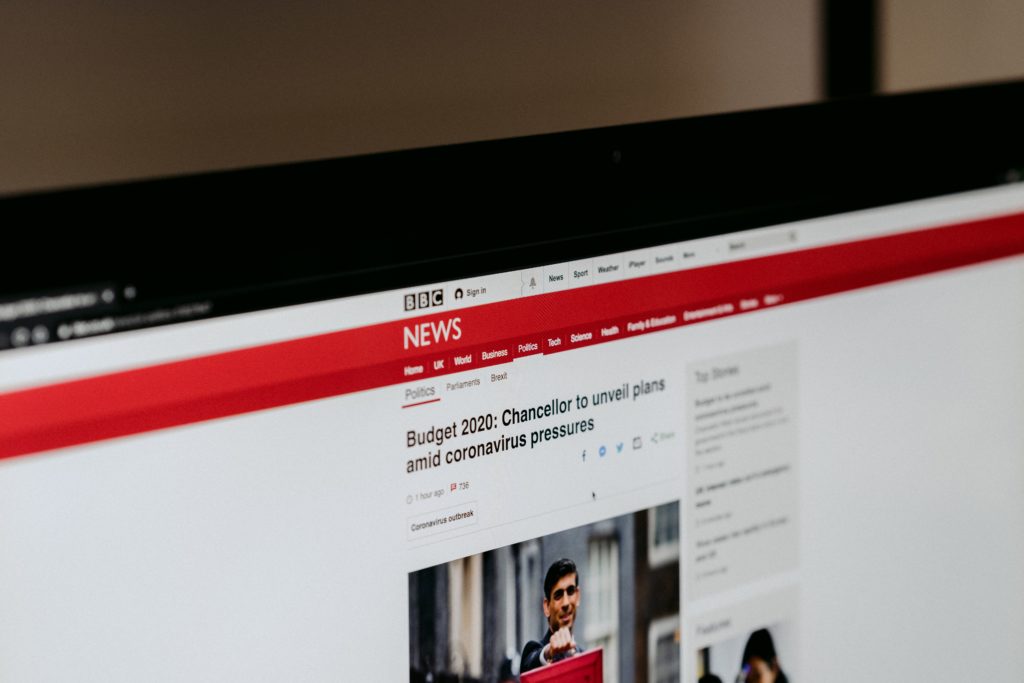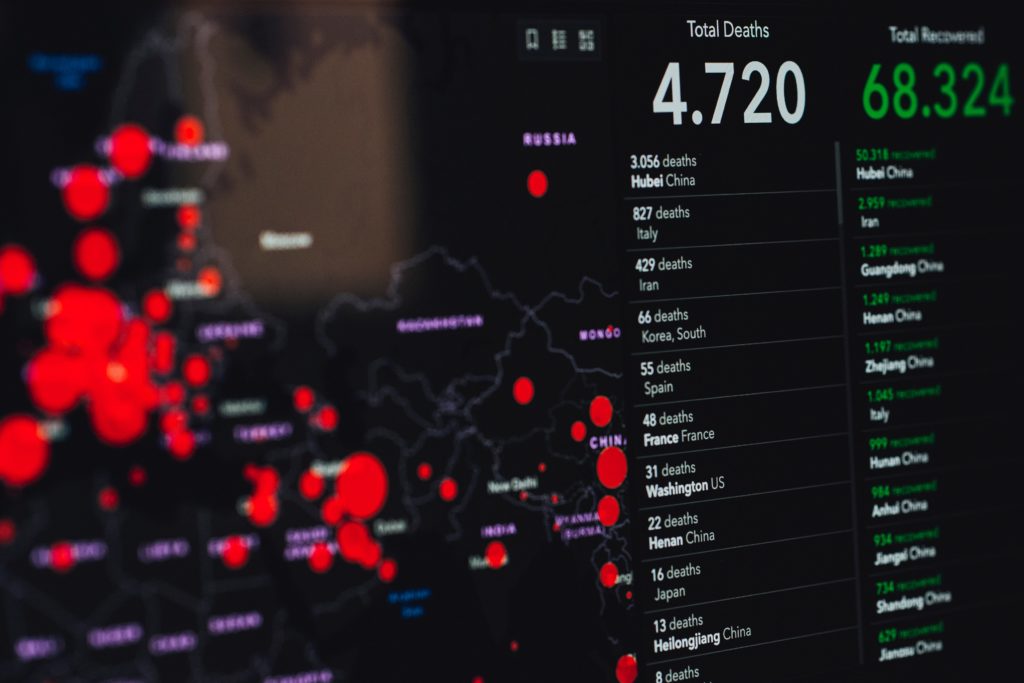We are currently experiencing the worst public health crisis in living memory. As we grapple with a new, uncertain reality, businesses are trying to minimize the impact of the coronavirus situation. So how do we, in such unprecedented circumstances, do this?
Right now, businesses everywhere are in a state of panic. The pandemic threatens to upturn society, affecting income, health, services, education, the stock market, supply chains, and more. When the world is turning upside down, how do we make sure what we do, as business leaders, is in our organization’s and our people’s best interests?
A crisis like no other

In terms of crises, the COVID-19 pandemic is unique. Unlike other situations – natural disaster, a technological hitch, financial fears – the coronavirus is a very real, very ongoing threat. People all over the world are pulling back and staying home to minimize contagion. The coronavirus is not only causing real anxieties, but massive income falls for both people and businesses.
Creating an effective internal crisis comms plan
It’s also the first widescale health scare that has been subject to 24/7 flood of information, speculation, and misinformation. Separating fact from fiction is becoming increasingly difficult. Even official government advice is being ignored, as people follow their gut instinct to tackle the problem. Experts are still unable to provide a clear view of its spread and impact. From Chinese authorities first detecting an outbreak in December 2019 to it being declared a pandemic on March 11th, 2020, the subject has been a matter of conjecture, fake news, rumor, and accusations of either scaremongering or underplaying the enormity of the issue.
What is the right response to the COVID-19 crisis?
This pattern is typical in crises. What starts as ignorance develops into discovery and then a more serious approach to planning and response. Some countries have acted more decisively than others, but everyone has been forced to create a response to the crisis, whether it’s a cancel-everything approach or instructions to keep calm and carry on. In a developing situation, governments have had to come up with a hastily drawn up plan, often forced by their country’s need for guidance.
Which is the same process that businesses have been experiencing over the past few weeks. When something is as unprecedented as this pandemic, how do companies navigate these unchartered waters?
These circumstances really test the mettle of businesses, and while the CEOs and management teams should stand up and take charge, it’s the internal communications and HR departments that take the strain. New protocol, revised strategies, and different priorities will all be the focus in the oncoming weeks and, more than likely, months.
In a situation that is continuously unfolding, many organizations will feel rudderless. But there is one benefit for businesses in the West: Asia has already experienced. China and South Korea, in particular, have been praised for their fast response in minimizing the spread of disease. As the supposed initial epicenter of the virus, the nations’ drastic steps have meant that – for now – the crisis has stabilized, and society is slowly returning to normality.
There are some industries that will be impacted more than others and these will hopefully be supported by the state. But, as we compile checklists, protocol, and new working initiatives, we look to the East to see what lessons we can learn.
1. Early action

Supor is China’s biggest manufacturer of kitchenware. They were also one of the first businesses to take the outbreak of the COVID-19 virus seriously. From early on, the company made sure to limit exposure in crowded areas like the staff canteen. It took this further by providing employees and their families with health checks and supplied each worker with preventative equipment. These measures were fundamental to the reopening of production lines in early February – an impossibility for similar businesses.
2. An agile response

When you’re in a situation that is continually unfolding, the only option is to move alongside it, which is what Master Kong, a popular brand of noodles and beverages, did. As the virus went from slight fears to widespread panic, the manufacturer reviewed their priorities and altered their efforts accordingly on a daily basis. Knowing that stockpiling was about to escalate, they moved their focus from supplying supermarkets to making sure their online sales channels were fully able to cope with the demand. In the meantime, they were in daily communication with the reopening plans of their offline outlets, which enabled them to react accordingly. This type of foresight enabled them to recover more than 50% of their supply chain in a few weeks – something that competitors are still trying to achieve.
3. Joining forces

While many ensure the impact on their own business is minimized, many large corporations have been committing to not only staying open for business but also joining the fight. By helping out with the logistics of medical supply delivery, the production of masks and disinfectants, and other safety materials, Chinese businesses have mitigated the risk of disease. The Green Line Initiative, set up by Cainiao, an arm of Alibaba, was launched in response to the surge in demand for protective clothing and medical supplies. Many businesses joined up as support, and in nine days, it had shipped over five million pieces of medical equipment to Wuhan and cities in the Hubei province. Customs authorities have worked with this Initiative to speed clearance at airports and ports, cutting the usual cargo overseas delivery time of a week to under three days. Ground robots have been deployed for last-mile deliveries to Wuhan and other areas on lockdown.
4. Eased remote working

Countless offices closed in China to minimize the spread, which resulted in vast swathes of the public working from home. While many of these remote workforces would have access to all the digital tools required to ease this passage, many more were forced to implement untested services. However, software companies like Huawei’s WeLink, DingTalk from Alibaba, and ByteDance’s Feishu have added new features to help users get on board quickly and help them steer through new ways of working. Some have even given free access to schools, SMEs, non-profits, medical institutions, and other organizations severely affected by the outbreak. Similar practices were adopted for students whose academic year faced disruption from institution closures.
5. Talent transferring

During the peak of the crisis in Asia, particular industries were more impacted than others. Those hardest hit have included restaurants, cinemas, small shops, and the hospitality industry in general. Most of these faced closures but were offered support from corporations whose services were heavily in demand. Alibaba and JD.com launched a talent sharing plan which offered those out of work short-term contracts, mainly in retail and e-commerce, and urgently needed services like haulage and deliveries of goods.
Creating an effective internal crisis comms plan
This relocation of labor has provided a boost to much-need recovery processes, as well as protected the livelihoods of millions of Chinese workers.
6. Flexibility within businesses

Organizations themselves have had to demonstrate a great deal of agility from within. Chinese business leaders soon realized that some departments would see a drop in demand, so made the decision to move staff over to busier areas.
But in a lot of situations, it wasn’t as easy as transferring to different corners of the company. For example in retail, many B2C businesses were forced to close many of their bricks and mortar outlets through the peak of the outbreak. It has been a struggle for many businesses to transfer the skills of shop floor staff to elsewhere in the business, and but some companies have come up with innovative solutions. Lin Qingxuan, for example, a cosmetics company, redeployed all its customer-facing staff to work from home. They then set up influencer accounts on social media to show off the products and drive online sales. It was this move that helped them see their sales in Wuhan double from the previous year’s.
7. Fighting against misinformation

We’ve already seen the queues outside supermarkets; the toilet roll stock depletion, the high level of anxiety on Twitter. It’s clear that in times of uncertainty, a lot of catastrophizing goes on. This is exacerbated through a lack of a clear understanding of the situation. Misinformation is bad for business, which is why organizations need to provide one source of truth for their employees to follow.
Many businesses have utilized their company intranet to counteract this. Strong leadership from CEOs and MDs are necessary, and regular updates are recommended. In China, businesses have relied heavily on services from the likes of Tencent’s Medipedia, a health encyclopedia. Throughout the outbreak, this site has continually updated to include new entries on coronavirus symptoms, medical treatment, and preventive measures, which are edited and reviewed by renowned medical experts. A tech company, Baidu, has been displaying a virus map, showing real-time locations of confirmed and suspected cases to help people keep abreast of affected areas – something that can change from week to week. A myth-busting site, JianZhen, has also been promoted by businesses that encourage employees to scrutinize the information they receive from other online channels.
Business in a post-coronavirus world

From shaking hands to office hygiene levels, the pandemic has undoubtedly made us question our traditional business practices.
As the shutters go down across Europe and America, we are learning what habits we could really live without. How many meetings are fundamentally necessary? Do we all need to cram onto packed train carriages to sit in close quarters with colleagues five days a week? How effective is expensive and lengthy business travel to meet clients and customers?
While crises carry major loss and tragedy, they also have unexpected consequences which change the landscape. The second world war saw massive leaps in healthcare as a desperate scramble to keep up with the devastation. Post-war, the economy meant the introduction of rationing, which saw a generation of children with lower mortality rates, and the best-nourished generation of pregnant women in history. After the 2008 financial crash, four-day weeks, the gig economy – were brought about and normalized, introducing a more flexible way of working.
In light of these events, could the coronavirus be a catalyst for change? It may seem a little hasty to envision right now, but once this period of flux is over – and it will be over in the not so distant future – how will the landscape have changed? Will the crisis have enabled us to streamline the way we work? Making us more accountable and more efficient? When we fully recover from this present threat, cutting off the fat of business traditions could be a welcome consequence of a dreadful chapter in world history.






